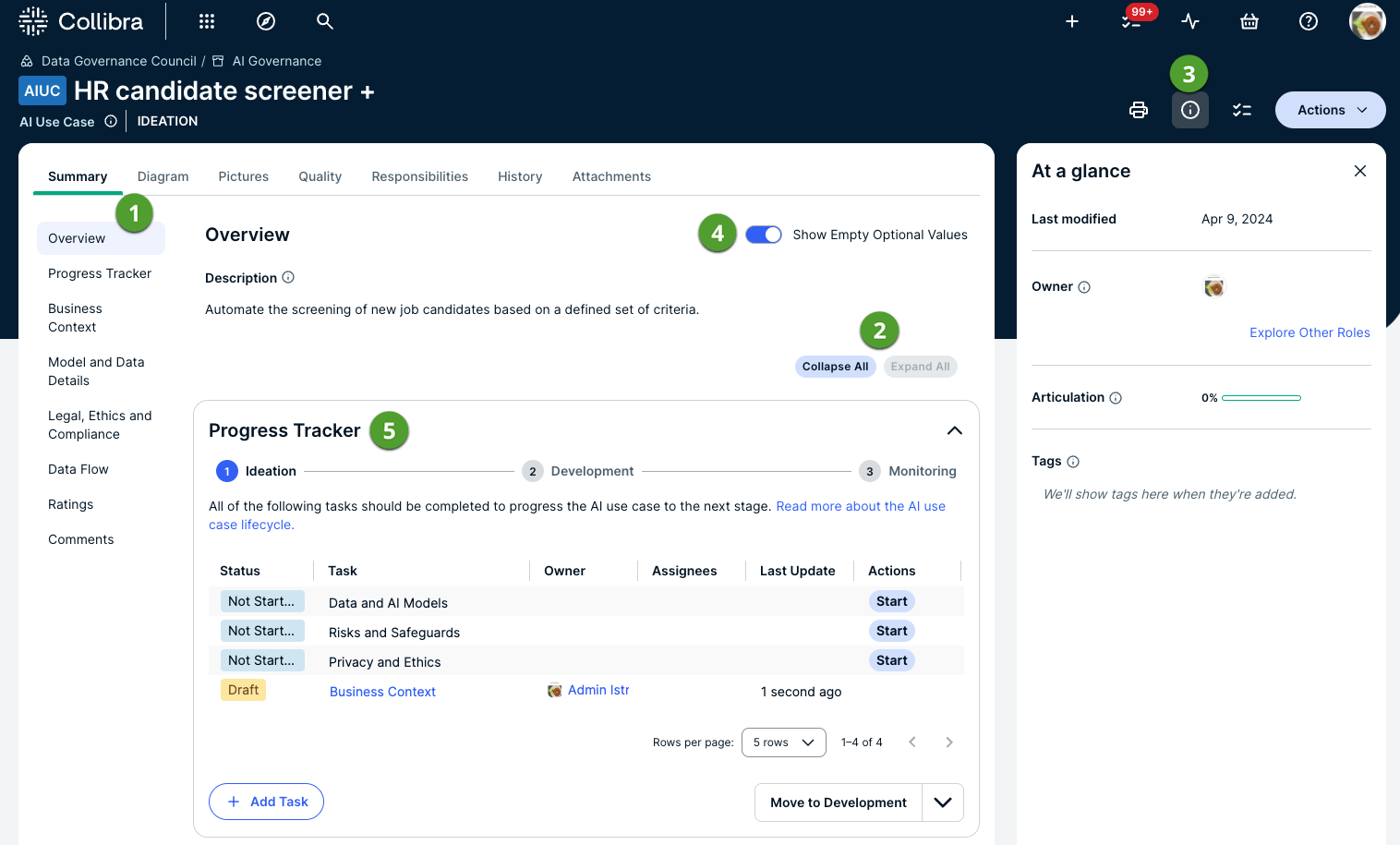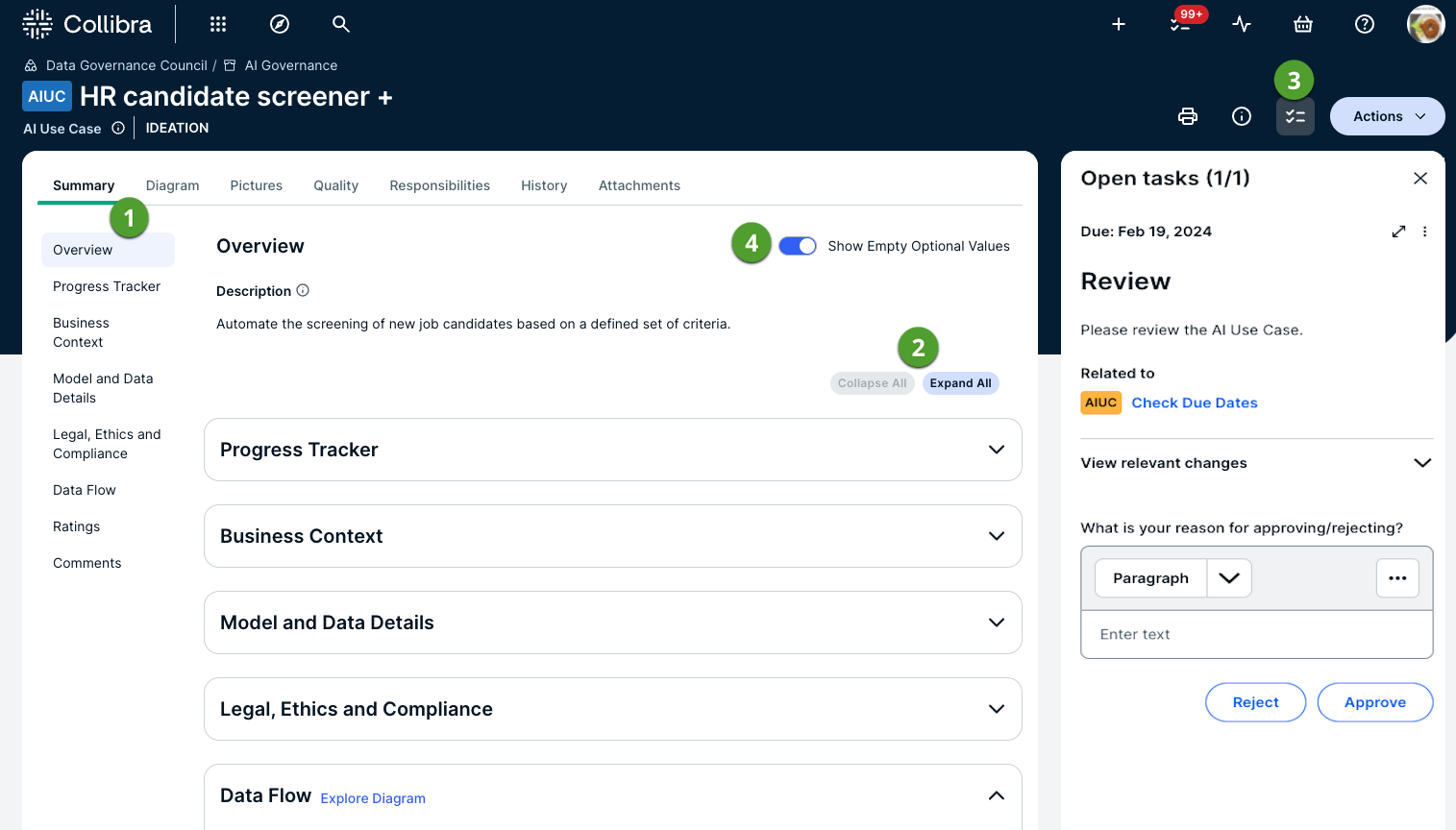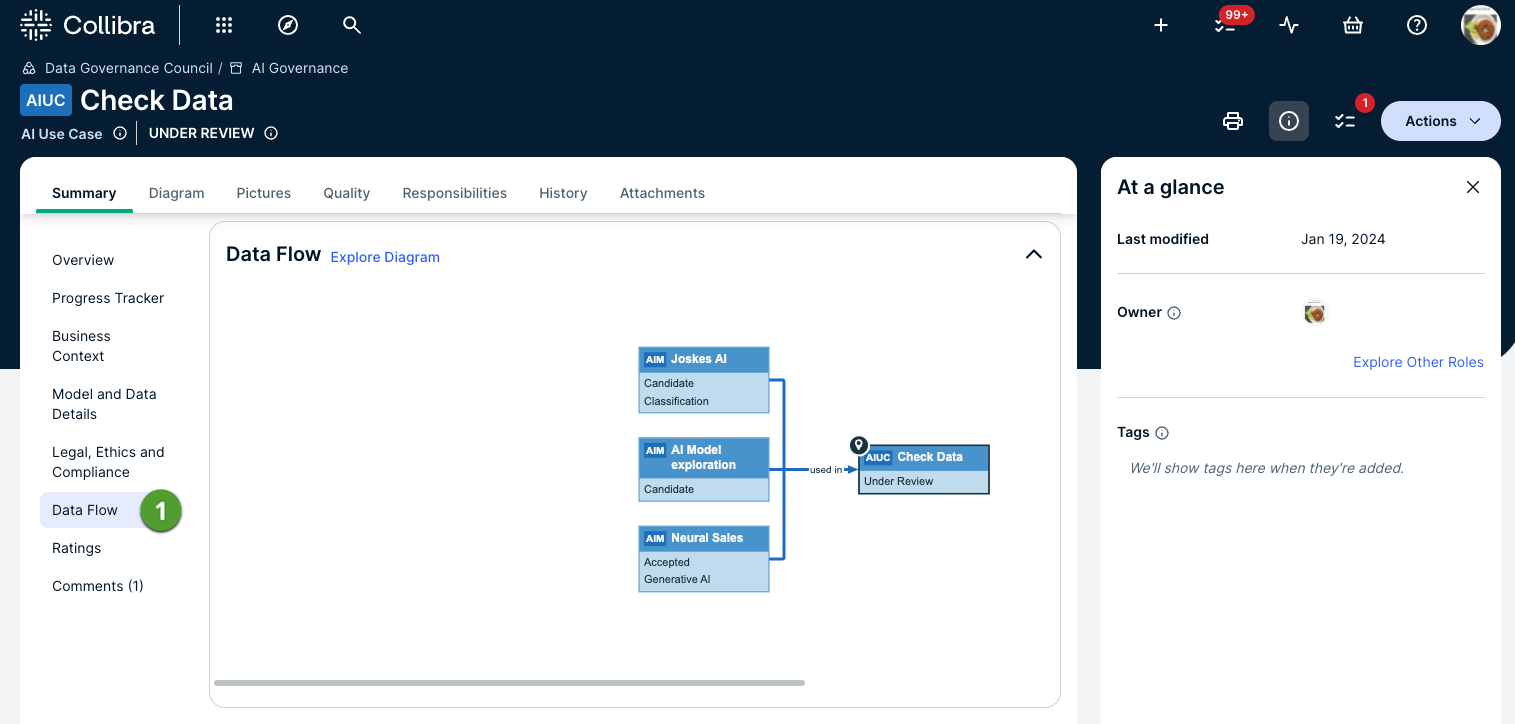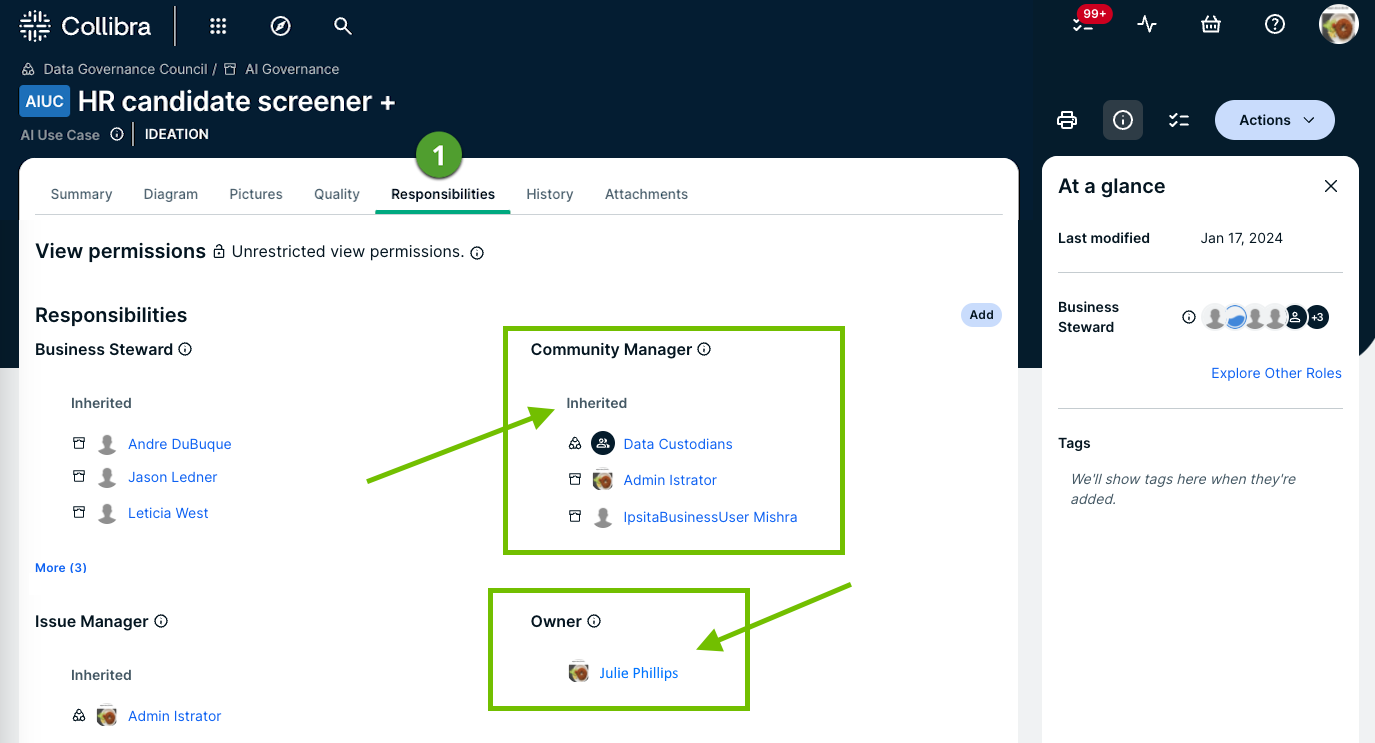The AI Governance asset pages are working records where stakeholders can collaborate as an AI agent, AI model, or AI use case evolves, to capture critical details as they become known. The asset pages are intended to be a single source of truth, where all stakeholders can quickly identify the business value and all associated risks.
Note The AI Agent, Deployed AI Model, Foundational AI Model, and AI Use Case asset types have customizable asset pages. Customizable asset pages include a drag-and-drop layout editor, asset layout widgets (for example, the Lifecycle tracker widget), and other features that enable administrators to customize the presentation of asset pages for all users. For complete information, go to About asset layout.
This topic presents some of the more notable features of the asset pages.
Choose an image:




| No. | Element | Description |
|---|---|---|
|
|
Summary tab |
Shows all of the asset details. For Deployed AI models and AI uses cases, most of the details are provided via the assessments. You can edit, add and delete details. Important
Be mindful of the edits you make on the asset page before the assessments are completed and approved. When an assessment is approved, depending on the assessment type, certain assessment responses are copied to the asset page. If you manually edit the attributes of an asset, some of the values might be overwritten when the assessment is approved. For more information, go to: Tip If you want to manually fill out the details without conducting the prescribed assessments, you can create the asset via the global Create button. When you create an asset that way, no assessments are started. You can then add details to the various sections of the asset page as you would an asset of any other type, knowing the values won't be overwritten by an assessment. When you're on the asset page, remember to switch on the Show Empty Optional Values option, to see all of the available fields.
|
|
|
Data Flow tab |
Specific only to AI Use Case assets, this tab includes the Diagram widget, which depicts all of the relations that exist between the AI use case and other assets, for example linked Deployed AI Model and AI Agent assets. Click the Explore Diagram link to open the diagram view in the Diagrams app. |
|
|
Collapse All / Expand All buttons |
Allows you to expand or collapse all of the sections of the asset page in a single click. |
|
|
Responsibilities tab |
Shows the Owner that was specified when registering a new AI agent, AI model, or AI use case, and all inherited responsibilities. |
|
|
At a glance sidebar |
Shows the following information:
|
|
|
Task sidebar |
Shows any tasks related to the asset that are assigned to you. |
|
|
Show Empty Optional Values toggle
|
If the Show Empty Optional Values option is switched off, all attribute types and relation types that don't have a value are hidden. If you want to add values in empty characteristics fields, ensure that the Show Empty Optional Values option is switched on, and then click in an empty field to enter a value.
|
|
|
Lifecycle tracker |
The Lifecycle tracker is an asset layout widget that allows you to:
Tip If the Lifecycle tracker does not appear on the asset page, refer to the conditions for including the Lifecycle tracker on asset pages. |




